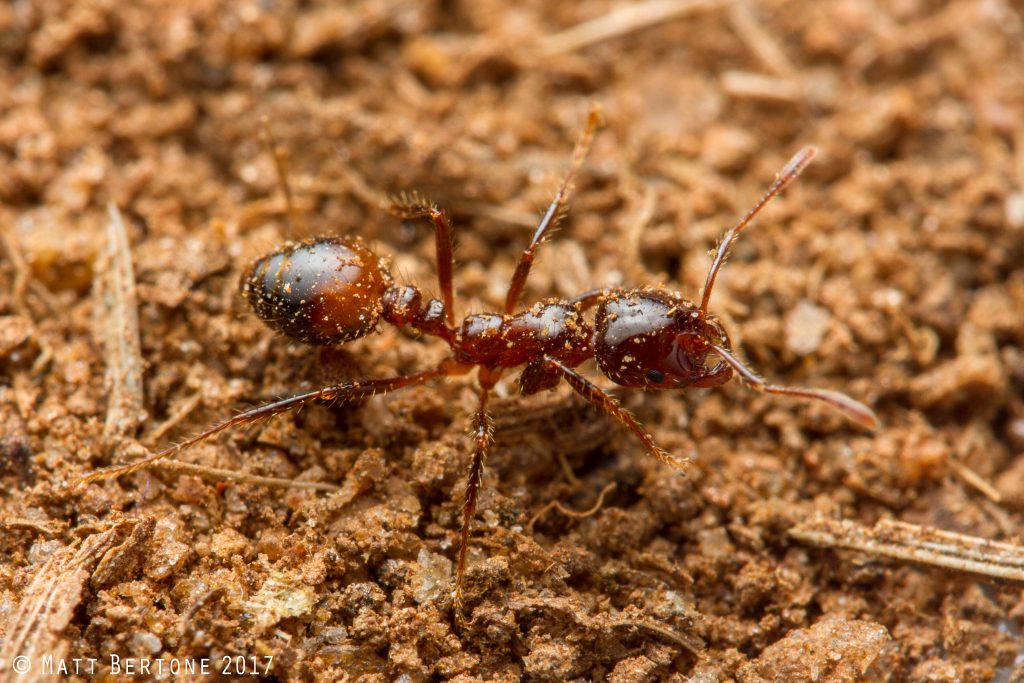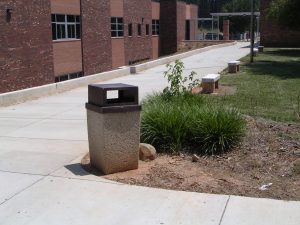School has begun – or will begin very soon – in many school districts. Now is the time to get a handle on red imported fire ants on school grounds.
Managing fire ants in and around schools requires balancing the health risk of someone being stung by fire ants with the risk of pesticide exposure. One of the safer methods of managing fire ants is through the application of baits. For optimal results, baits should be applied between 70 and 85 degrees F when fire ants are most active. During the summer, this typically means applying bait early morning or early evening. Make sure the bait is acceptable to the ants. Apply baits when no rain or dew is expected for at least five hours; if the bait become soggy, it will no longer be attractive to the ants. Avoid disturbing the ants or the mound right before applying the bait. Apply bait along the edges of mounds, rather than directly on top.

Take some time to walk around school buildings and grounds near buildings to locate any fire ant nests. Pay close attention to areas students may congregate, line up for buses, around outdoor trashcans, play areas, and athletic fields (Figures 1 and 2).
If you find there are multiple fire ants nests on the school grounds, a broadcast bait application can be very efficient. With broadcasted baits, a small amount goes a long way. And broadcasting small amounts of bait over larger areas poses minimal health and environmental risks. However, if only a few nests are present, is may be more efficient to bait each mound individually.
Remember, baiting does require some time before results are seen – anywhere from a few days to a couple of weeks – depending on the active ingredient. Baits containing insect growth regulators usually take longer to work. With that in mind, if any fire ant mounds are located in areas where they may pose an immediate threat, a nest drench with a liquid insecticide or a watered-in granular insecticide may be appropriate. As with baiting, the best time to treat mounds individually with a liquid or granular insecticide is early morning or early evening as most of the brood and the queen will be closer to the surface at that time.


